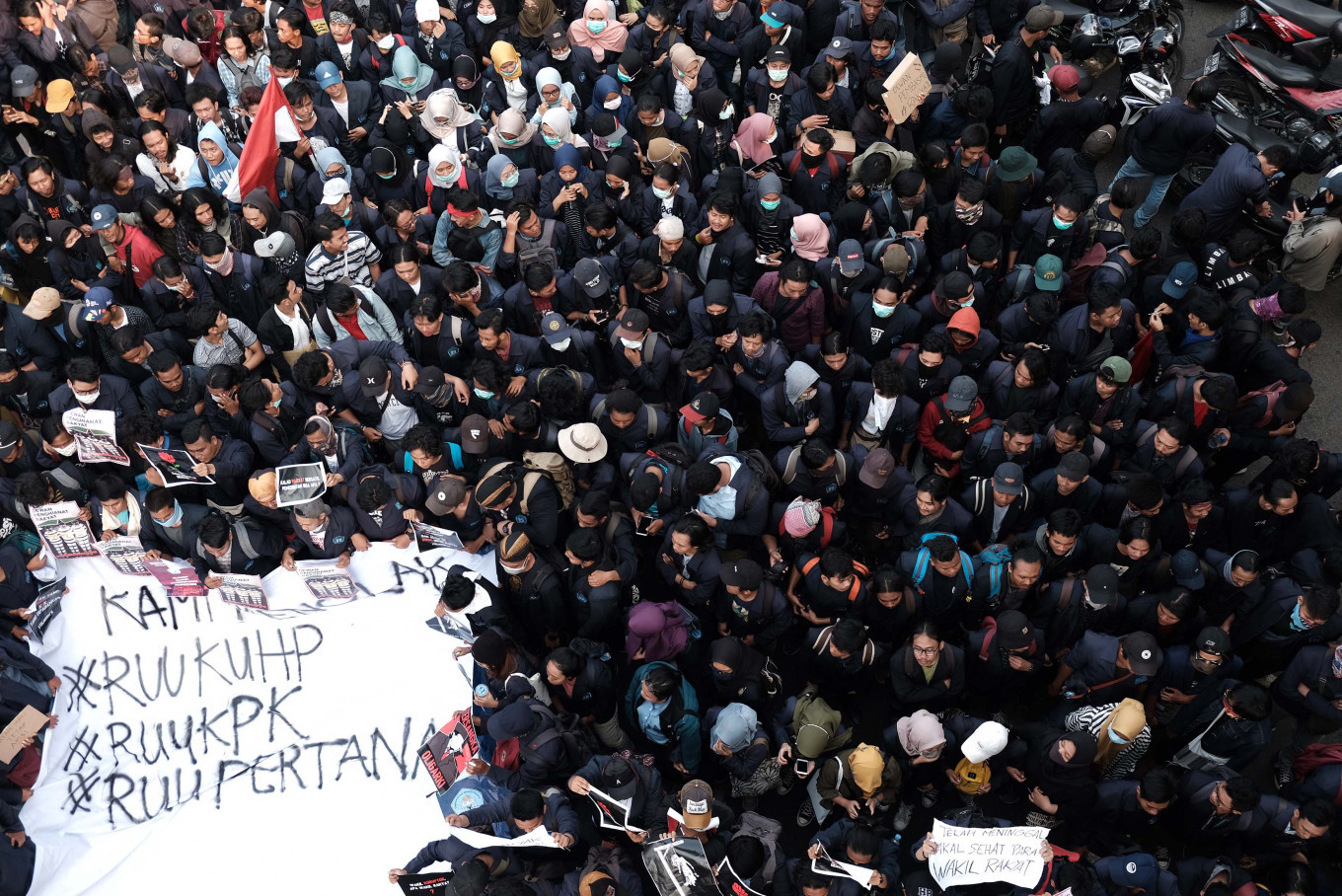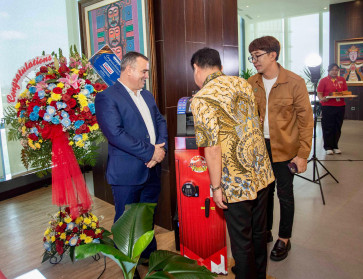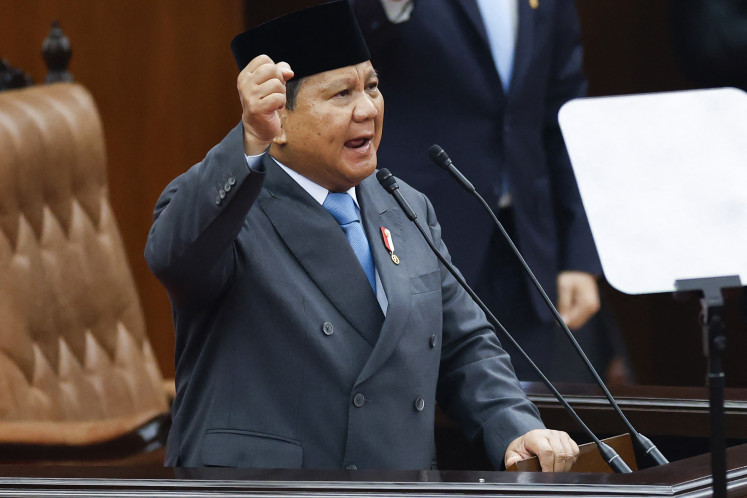Popular Reads
Top Results
Can't find what you're looking for?
View all search resultsPopular Reads
Top Results
Can't find what you're looking for?
View all search resultsDifferent issues, same ideals for post-reform student movements
Twenty-five years since student movements helped bring about the fall of president Soeharto, the reputation of student movements as the vessel for the people’s aspirations still holds true. Despite their lofty reputation, however, the student movements of today have yet to affect similar change as their predecessors.
Change text size
Gift Premium Articles
to Anyone
Twenty-five years since student movements helped bring about the fall of president Soeharto, the reputation of student movements as the vessel for the people’s aspirations still holds true. Despite their lofty reputation, however, the student movements of today have yet to affect similar change as their predecessors.
In a survey conducted in April 2022, Litbang Kompas found that 43 percent of respondents believed that student movements were the group that most represented public aspirations. Political parties, which technically represent the public as members of the House of Representatives, only received 3.3 percent of the votes.
Despite having not yet been born when thousands of students occupied the House complex in Jakarta in 1998, Kaharuddin, who led one of two factions of the National Association of University Student Executive Bodies (BEM-SI) in 2021, maintained that the student activists of today are still building on the legacy of those who came before them.
“When those in power deviate from the Constitution, the students must have to be ever present in keeping the government in check," Kaharuddin told The Jakarta Post on Saturday. “When you see student movements taking to the streets, that’s a sign that something is seriously wrong."
While student movements continued to be vocal critics of the government after the fall of Soeharto, it was not until September 2019 that they began to coalesce into a massive force almost on the scale of the 1998 student protests.
Under the banner of #ReformasiDikorupsi (reform corrupted), student movements across the country took to the streets to protest against the planned revision of the Criminal Code (KUHP) and the new Corruption Eradication Commission (KPK) Law.
Read also: Students lead the way, again
In 2020, under the threat of the COVID-19 pandemic, student movements again held massive protests together with labor unions against the government’s omnibus bill on job creation. Despite the scale, with the protests in 2019 being described as reminiscent of 1998, these newer student movements have yet to affect similar change within the government.
The House, and the government, eventually passed the KUHP revision in 2022 with the majority of questionable passages still intact. Despite the Constitutional Court ruling in 2021 that the passing of the jobs law was flawed due to inadequate public consultations and ordered a redo of deliberation in the legislature, the government bypassed this by issuing a government regulation in lieu of law (Perppu) to resuscitate the jobs law early this year.
Failure of student movements?
Manik Marganamahendra, former head of the University of Indonesia’s student executive body (BEM UI) that participated in the protest in 2019, believed that it was a misconception to blame the failure of the 2019 protests to overturn the government policy on the feet of the student movements given the political reality.
“Even with massive student protests, the current regime also holds massive power at the [House of Representatives] as the opposition is rather small,” Manik told the Post on Sunday. “The reform movement in 1998 too has several extenuating circumstances, including the Asian financial crisis”.
Read also: Fractured student movement losing power to effect change
Since winning reelection in April 2019, President Joko “Jokowi” Widodo has begun consolidating power in the House. Former opposition parties Gerindra Party and the National Mandate Party (PAN) switched sides in October 2019 and August 2021 respectively, leaving the Prosperous Justice Party (PKS) and the Democratic Party as the sole remaining opposition force in the House.
Comparatively, Soeharto’s grip on power had been severely weakened after Indonesia suffered the impact of the Asian financial crisis in late 1997. Still, the problems plaguing the post-reform student movements go beyond their diminished power, but also in more devious attempts at destabilizing the student movement itself.
“This process of dividing the student movements is one reason why we’ve had little success in mounting a cohesive force," Manik said. “Even we at BEM UI received some disturbing rumors back in 2019 that during our planned protests on Sept. 30, someone would be made a martyr."
Kaharuddin corroborated the information, saying that “even without the threat of shootings or kidnappings [like in 1998], there are still psychological attempts at dividing us".
While the student movements in 1998 remained united in their opposition to Soeharto, today’s movements are more fragmented.
In March 2022, while student movements were criticizing the government over rising cooking oil prices, a coalition of student organizations named the Cipayung Group, which included the influential Islamic Student Association (HMI) and the Indonesian Muslim Students Movement (PMII) in its ranks, met and expressed their support for President Jokowi.
Nevertheless, Manik believed that the student movements would continue to gain momentum in the future. “Student movements could be more than just a moral force but a political force as well. Students have a right to voice their opinions and their demands to the government instead of being reactive and simply responding to currently relevant issues," he said.










